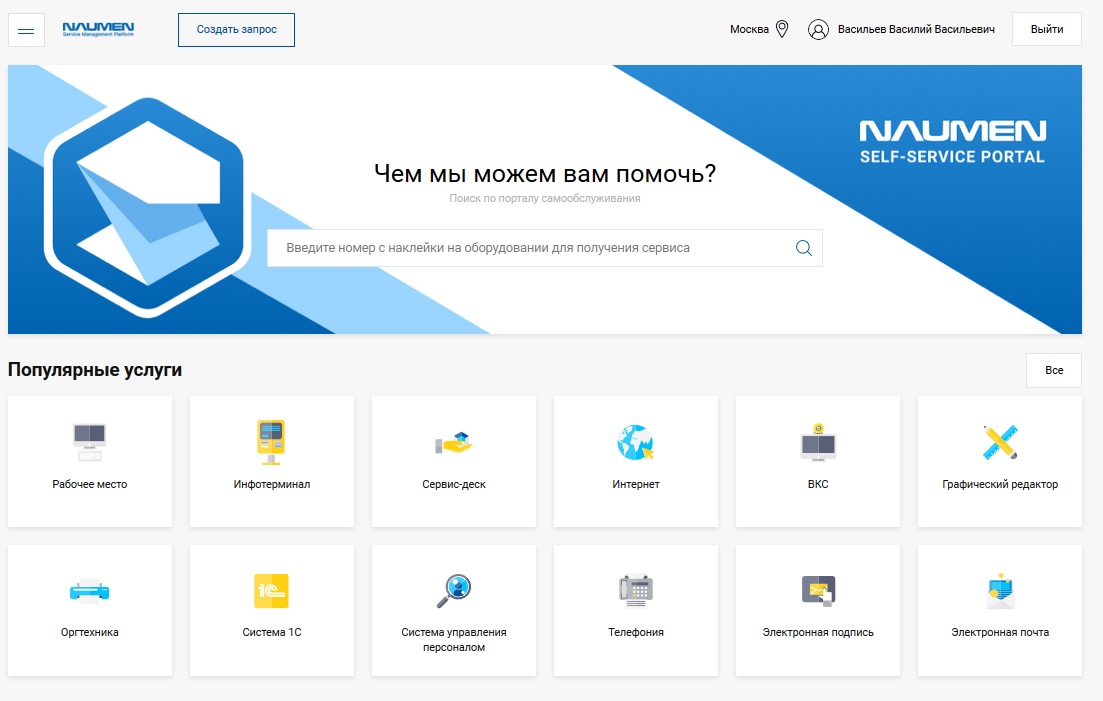
If you are an analyst implementing ITSM solutions, then you know exactly what a giant tangle of information has to be unwound in each client project. Understand the processes, collect requirements, fill out dozens of documents and agree on them ... At any of these stages, it is easy to fall into the data trap. Saves an iterative approach and ... experience.
At the design stage in the IT system of the client's service catalog, there are no less tasks. In this article we want to tell you how we tried different approaches to creating service catalogs, why we abandoned multi-page documents and tables, and also how the process is organized now.
The evolution of the approach to creating a service catalog
In client projects, we have tried different approaches to compiling service catalogs.
Tables in Word. A few years ago, using a waterfall development model, they meticulously collected information into text files. In these documents, everything was recorded - from the name of the services, the main responsible ones to the types of activities for a specific service and SLA.
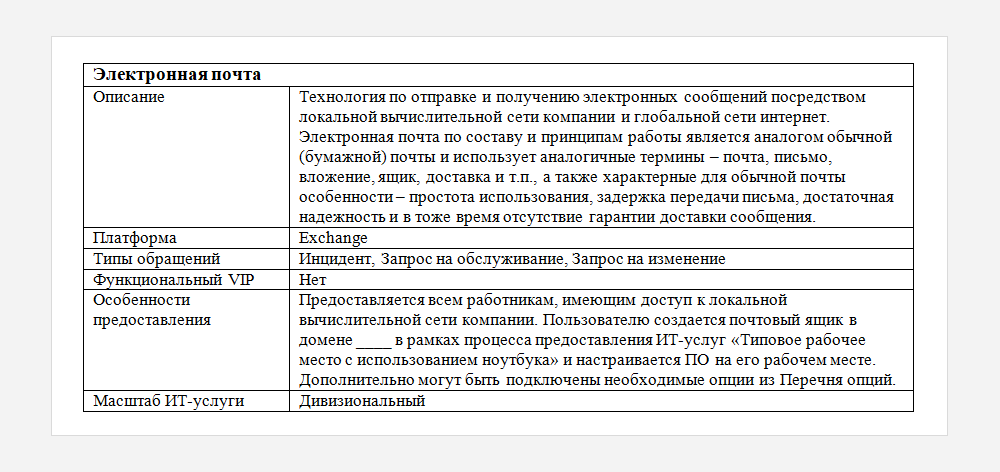
An example of a tabular description of the "E-mail" service in the format of a text document
The procedure for such an "inventory" is non-trivial and partly useless. While you turn over the services one by one and get to the last one, the first one already loses its relevance: the contractor has changed, the terms have been reconciled, the set of possibilities has been revised. All work can be done anew.
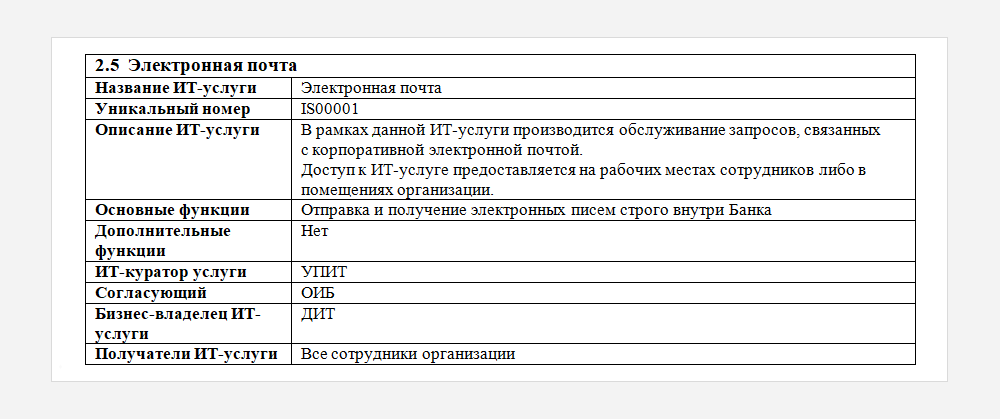
By the end of the audit of services, the completed tables could be in the tens
Not only is the information corrected on the fly, but the set of parameters itself swells and swells with each update of the table. After all, it is not enough to know about the service SLA and responsibility. It is better to remember all recipients by name, as well as find out what infrastructure resources the service provides and on what resources it depends.
At the same time, processes in any company are not static. New services appear, existing ones develop. Services are overgrown with a huge layer of objects: queries, reference books, links, parameters, KE.
No matter how long the development of the document lasts, there is no end and edge to be seen. The document is difficult to agree on, and its suitability is questionable. It's like a renovation that cannot be completed, but can only be suspended. So in our past projects, work with multi-page "scrolls" usually ended with the phrase: "Enough! It's time to get into the system. "
Excel tables . Instead of multi-page documents, other tables have burst into our practice. We still left the descriptive part for the client in text. And a table with a list of services and their parameters was attached to it. Again, it was not possible to add the necessary information into one document. In fact, the service catalog grew into a network of interconnected tables.
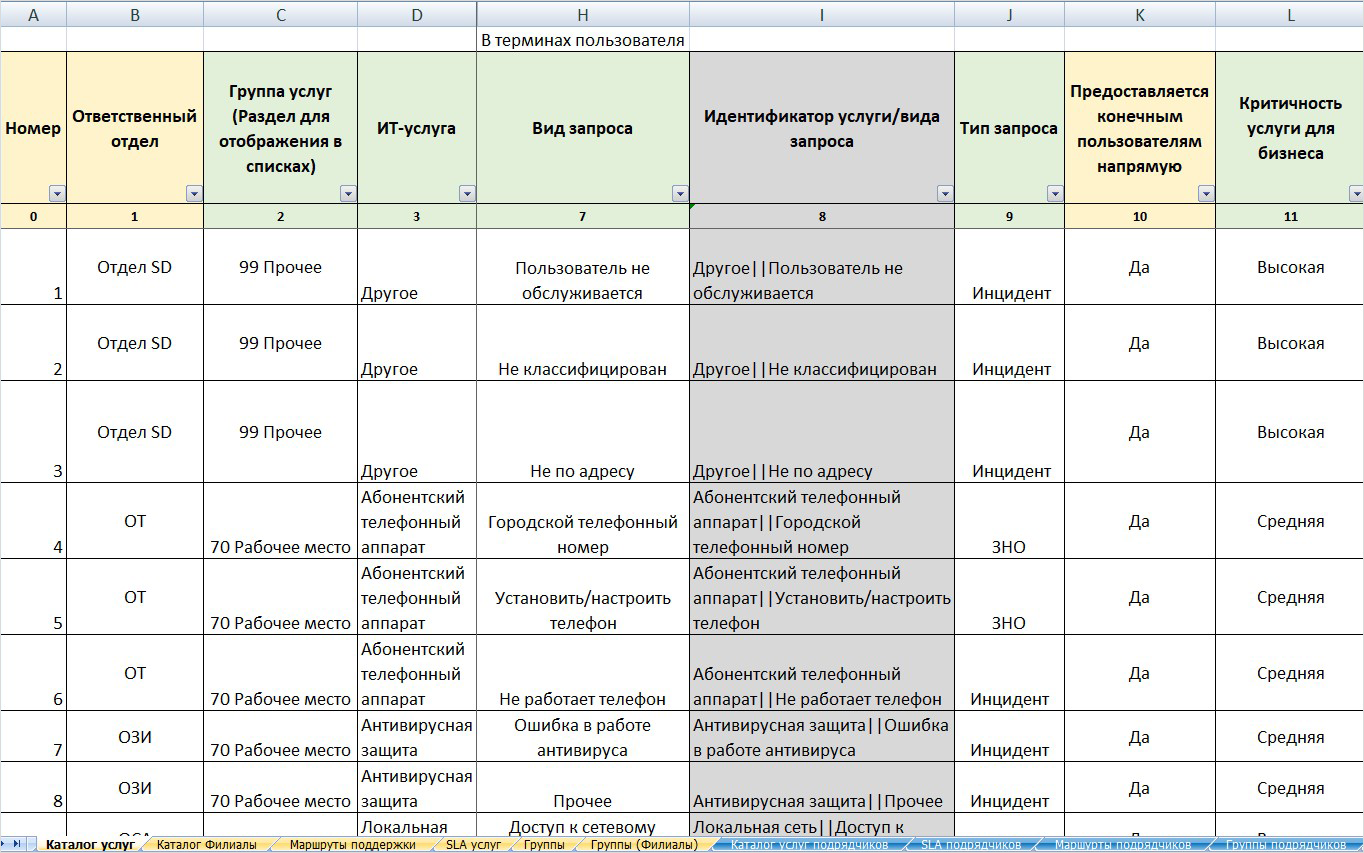
Manually maintaining many tabs and columns in Excel is inconvenient. The implementation analyst spent hundreds of hours on this work.
We considered this method of compiling a list of services as a basis for primary import into the automation system. Further development and optimization were planned to be carried out already in the IT system. But this approach also turned out to be not without drawbacks.
As our project experience shows, preparing catalogs in the form of static documents is not an economically justified task. The labor costs are enormous, the exhaust is zero. Except for signing the document and closing the acts, it will no longer be needed. If a convenient automation tool is introduced, no one revises these footcloth tables.
Another thing is a dynamic catalog, which is initially designed with its own structure and value.in the automation tool . Such a directory begins to function only when the first service appears in it. It is impossible to develop a turnkey service catalog at the implementation stage. During this period, it is possible to launch the process of filling and updating it. This means that the best approach is to collect a minimum of information and go straight to the IT system.
What is the value of a service catalog
All participants in the process will feel the benefit of a well-designed service catalog.
The service recipient will be able to form an appeal quickly in a couple of clicks and will not get confused about where and what to choose. Self-service Portal

interface with a convenient grouping of services. Implemented on the Naumen SMP platform
Service process practitioners do not need a catalog as such. The specified structure helps to simplify the process of classifying applications and their subsequent processing. The deadlines, steps of implementation, affected services, stakeholders in coordination and escalation become clear.
Process managersa slice of data on the portfolio of services provided is necessary for management decisions: audit of the volume of requests, information on reaching agreements and compliance with process procedures.
Owners and Customers are interested in quality and finance parameters.
What steps will help create a service catalog in an IT system
It is better to use an iterative approach and move through the steps as the basis for developing a clear service catalog.
Step 1. Goal definition
The main question in any activity is "why?" For themselves, the goals of the service catalog were formulated as follows:
- Organize productive interaction with service recipients.
- Use a single platform for building ITSM processes and applying a service approach in all departments of the company.
- Lay the foundation for the management and development of all business processes.
Step 2. Conducting a survey
Clients often say: “Our service catalog is ready. But we will not show him, so as not to knock him down with an approach on a whim. Offer us the right catalog from scratch. "
Nowadays "from scratch" is like going back to the Stone Age or trying to reinvent the bicycle. You should not give up on developments. We take everything we have and pack it into an IT system.
If the service catalog in the company is not formalized, we analyze the following artifacts:
- log of requests;
- (if used) classifiers and reference books for applications;
- list of information systems and equipment;
- organizational structure;
- service contracts with external suppliers.
Further, the algorithm is as follows:
- We highlight popular questions for service providers.
- We form a set of services in a language understandable to the user.
- We group and "ground" calls to managed resources.
- We offer the name of the service that the user will see in the IT system when submitting a request.
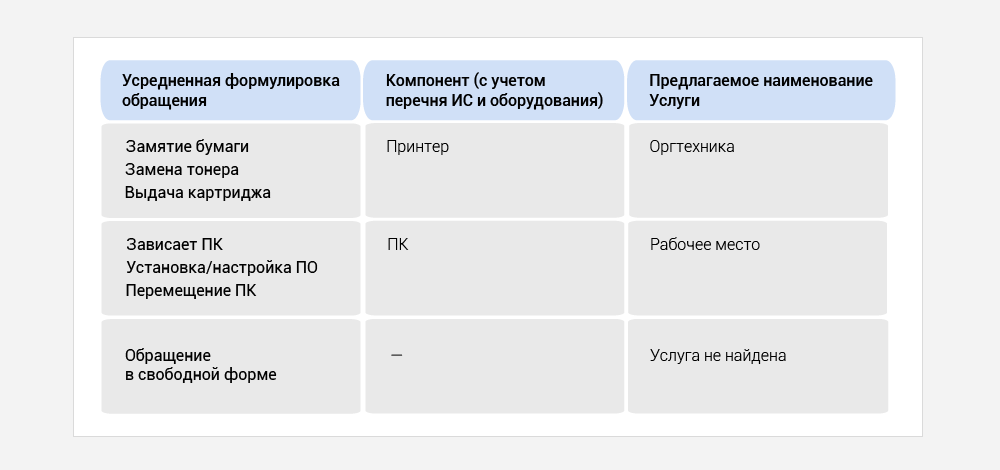
Correlation example: Address of the user-Equipment-Service in the IT system
Initially, the catalog should provide the service "Other" / "Application in free form". Behind the scenes it is called the "Garbage Channel". With a periodic analysis of such calls, you can determine:
- poorly worded service names. For example, a specific service is present in the catalog, but users do not find it and choose a universal one;
- the need for staff training. For example, users of a particular department systematically indicate the service "Other", while most departments choose the correct classifiers;
- trends and needs in the development of the service sector. For example, there is a large volume of repeated requests for services that are not provided by the service organization.
Step 3. Distribution of responsibilities
When the starter set of services is ready, you need to install and fix the performers.
It is important to define the levels of responsibility:
- Executor of requests.
- Service manager.
- Directory manager.
It's easier to find a contractor. To do this, relying on the statistics of the call log, we compare job descriptions with functional duties and competencies.
The service manager will be the one to whom the Customers come first of all, if the service does not function or its quality does not suit the consumers. Most likely, this is the head of the executor or an employee higher in the organizational structure branch.
Choosing who is responsible for the entire directory is a more difficult task. As practice shows, more often such managers are appointed:
- Software implementation project manager. Sees the big picture and can make centralized management decisions.
- (-). , , .
- . , : , , , .
4.
When the initial version of the catalog is assembled, you can start to work in more depth.
Here we immediately share our developments: what parameters were most in demand in practice and why they are needed.

A ready-made list of service parameters. Download full version
The result of the formation of a catalog of services in the IT system is a high-quality classifier, while still being updated and manageable.
Step 5. Development of the catalog
An important stage in the development of a service catalog is setting up a connection with a resource-service model (PCM). Designing and maintaining it can take up endless labor. But there is much more benefit from it.
We will show the value of this connection with a simple example. The Internet does not work in the company. The incident is registered. It is PCM that will help you quickly find out what the source of the problem is (in relation to the supporting equipment) and what services depending on this node will fall off further.
The final chord is to paint the interdependencies between services, add a list of CUs and introduce a configuration management process into the IT system. And the main thing is to live according to the process so that all this delicately collected is not spilled!

An example of a part of the service catalog that simultaneously serves as a KE classifier
When the catalog of services is formed, the KE is loaded and the connections are registered, it remains to integrate with the accounting system. Calculate the cost of services, the cost of their support. But that is another story…